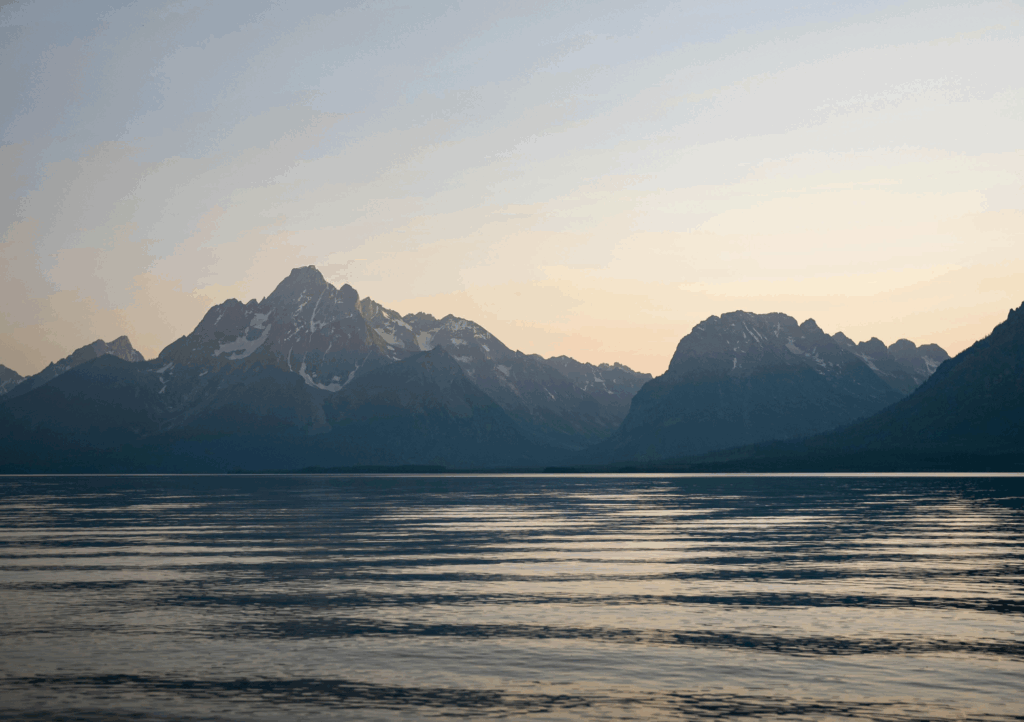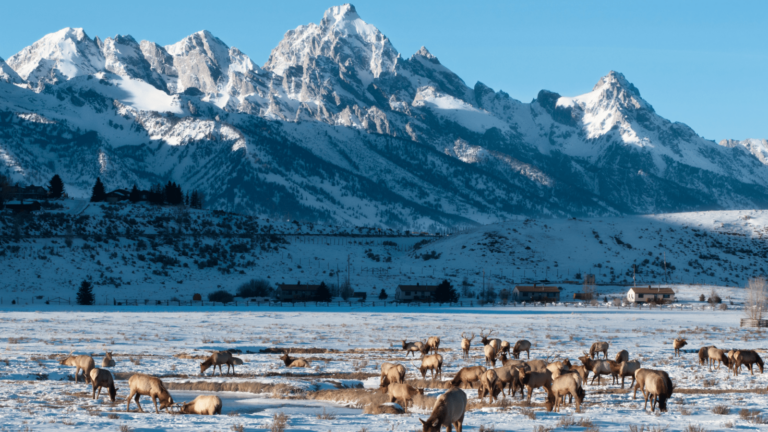In this edition of “Shaping Jackson Hole,” we’re focusing on John Colter, one of the first recorded explorers to enter the Jackson Hole Valley. Best known for his role in the Lewis and Clark Expedition and his later solo journeys through the West, Colter’s experiences offer a glimpse into the early days of exploration in the region. His path through the Teton Range and the Yellowstone area helped shape both the physical and historical map of Jackson Hole.
The Famous Lewis and Clark Expedition
In 1803, John Colter joined the infamous Lewis and Clark Expedition. He enlisted as a private under Captain Meriwether Lewis in Pittsburgh, Pennsylvania, where they were waiting for the completion of their vessels. He was paid $5 per month. The expedition took off from their winter camp in St. Louis, Missouri, in the spring of 1804. He quickly proved himself a valuable and skilled member of the team.
According to NPS.gov, John Colter’s name was mentioned over 200 times in the journals kept by the expedition team, with the vast majority of those references regarding his hunting skills. He was frequently tasked with scouting and sending messages between the separated parties. He was celebrated for keeping his cool under fire, which made him especially helpful while bartering, trading, and maintaining peace with Native American Tribes they encountered on the trail during and after the expedition.
In August 1806, while returning to St. Louis, Colter received special permission to leave the expedition early. On August 16, 1806, John Colter left the Lewis and Clark expedition and set out on his own adventure.
Exploring Yellowstone and the Teton Range
In 1807, a successful fur trapper named Manuel Lisa found John Colter paddling alone up the Platte River. Lisa’s party was heading toward Yellowstone. They hired Colter as a guide to take them to the Big Horn River. Colter’s knowledge of the frontier would be vital to the success of their business venture.
They quickly built Fort Raymond, and Colter left to build relationships with the neighboring tribes to discuss trade. He traveled alone through Crow territory with nothing but a pack and a rifle. He crossed portions of the Wind River Mountain Range and the Teton Mountain Range. He is believed to have been the first white man to see Jackson Hole and Yellowstone Lake. After he returned to Fort Raymond and described the geothermal activity he witnessed in Yellowstone, he set off again with a colleague from the Lewis and Clark Expedition, John Potts.
One day, as Colter and Potts were trapping beavers on Blackfoot territory, they were attacked by the tribe. Potts was shot with multiple arrows and died defending himself on the banks of the river. Colter was stripped naked and forced to run for his life. Famously known as Colter’s run, John Colter ran naked through brush and thicket for over 6 miles with over 100 Blackfoot chasing him. He managed to outrun the tribe. Plunging into a river, he hid under driftwood until night fell and the group gave up their chase.
Later Life and Legacy
After a few more years and a few more dangerous encounters, John Colter finally retired from fur trapping and exploration. He returned to St. Louis in the fall of 1810. He spent 6 years in the unrelenting wilderness. By 1814, William Clark published the first comprehensive map of the Yellowstone and Teton areas, following Colter’s 1807 trek.
John Colter’s legacy helped shape the culture of Jackson Hole. His adventurous spirit and fearless exploration of the unknown laid the foundation of a culture that celebrates the wild and the independent.

Float Through the History of Jackson Hole
Interested in seeing the same landscapes that early explorers like John Colter once traveled? Join us on a Snake River float trip with Teton Scenic Float Tours. Our peaceful, 13-mile journey offers incredible views of the Tetons, opportunities for wildlife spotting, and insight into the rich history of the Jackson Hole Valley.
Whether you’re a history enthusiast or simply looking for a relaxing way to experience the area, our float trips provide a unique perspective on the place pioneers like Colter helped put on the map.
👉 Learn more about our float trips in Jackson Hole and reserve your seat today!
Frequently Asked Questions about John Colter
Who was John Colter?
John Colter was a member of the Lewis and Clark Expedition and one of the first recorded explorers to enter what is now Jackson Hole and Yellowstone. He’s known for his solo expeditions through the region and his legendary escape from the Blackfoot tribe, known as “Colter’s Run.”
What is Colter’s Run?
Colter’s Run refers to an event in which John Colter was forced to flee barefoot and unclothed for over 6 miles while being pursued by Blackfoot warriors. He escaped by hiding in a river under driftwood until nightfall.
Did John Colter discover Jackson Hole?
John Colter is widely believed to be the first white explorer to enter the Jackson Hole Valley. His 1807 journey took him through the Teton Mountain Range and parts of the Greater Yellowstone region.
What is John Colter’s connection to the Snake River?
Colter likely followed portions of the Snake River during his travels in the early 1800s. The river served as a key route for exploration, trade, and survival in the region.
How can I experience Jackson Hole history today?
One of the best ways to connect with Jackson Hole’s past is by taking a scenic float down the Snake River. Teton Scenic Float Tours offers guided trips with views of the Tetons, abundant wildlife, and local stories that bring the region’s history to life.




